Ten Questions: An Interview With Joel Sartore |
NPN Editor-in-Chief Richard Bernabe recently interviewed National Geographic photographer, Joel Sartore. In addition to his his frequent work with National Geographic, Joel has written several books including Photographing Your Family, Face to Face with Grizzlies, Nebraska: Under a Big Red Sky, and his most recent book offering, Rare: Portraits of America's Endangered Species.
Joel, welcome to Nature Photographers Online Magazine. Glad you could join us. As an introduction to our readers who may not be familiar with your work, could you tell us how you got your start as a freelance photographer?
This is the one question I'm asked more than any other. "By being very persistent," I reply. And while that's only the short answer, it's definitely true. I first worked for a newspaper in Wichita, Kansas for six years, first as a photographer, then as their director of photography. About halfway through my time, I met James Stanfield, one of the legends of photography at National Geographic. He graciously looked at my work and gave me a recommendation to send my portfolio to the Society's headquarters in Washington, D.C. For the next two years, I sent in clips of my best work from the newspaper, usually in three-month intervals. That eventually led to a one-day assignment, followed a few months later by a nine-day assignment, and so on.
In other words, being very type-A, obsessive-compulsive helped me a great deal in getting the Geographic to notice me. But, be careful if you're thinking about going down this road. There is a fine line between eager and enthusiastic and just being a pain. If you come across as the latter, your chances of getting anywhere in life are diminished. I have to work to calm myself down after I get back from an assignment, for example, or I would drive my family crazy.
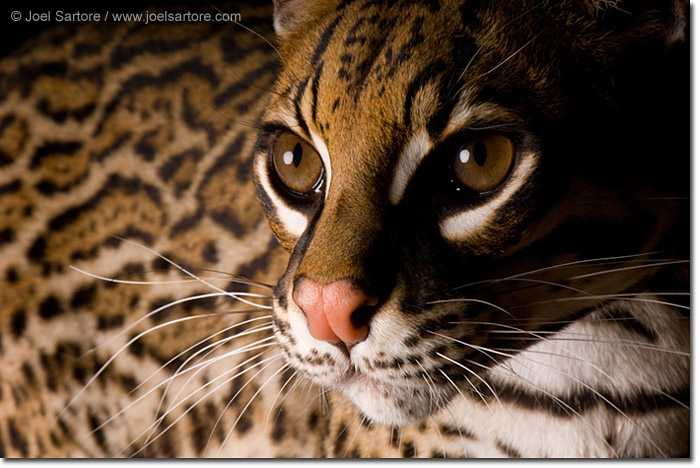
Early on in my career, I didn't photograph much wildlife. I was fighting focus and exposure until well into my newspaper days, mostly just worried about getting good enough photos to make the front page. It never occurred to me that nature photos could get good play as well. I've always been interested in nature, though. I loved going to zoos as a kid, and marveled at all the exotic things in them. Still do.
A big part of my interest in the environment comes from going fishing and hunting with my father nearly every weekend. He taught me about the need for habitat from day one. We were in the midst of a giant industrial agricultural zone, and so many acres were being lost to development each year that we could literally see the game failing. Lose the habitat and you lose the wildlife, it's as simple as that.
Your body of work is such a diverse variety of subjects. Is there any genre or type of photography that gets you more excited than others?
Yes, photos that expose environmental issues/problems and eventually lead people to do something about them.
Your imagery of small town America and its people is extremely compelling. How did growing up in a small town on the Nebraska plains enable you to connect with these places and people so effectively?
We all have to be nice to each other out here because the spaces and weather can be overwhelming. If you help others, you'll get help when you need it as well.
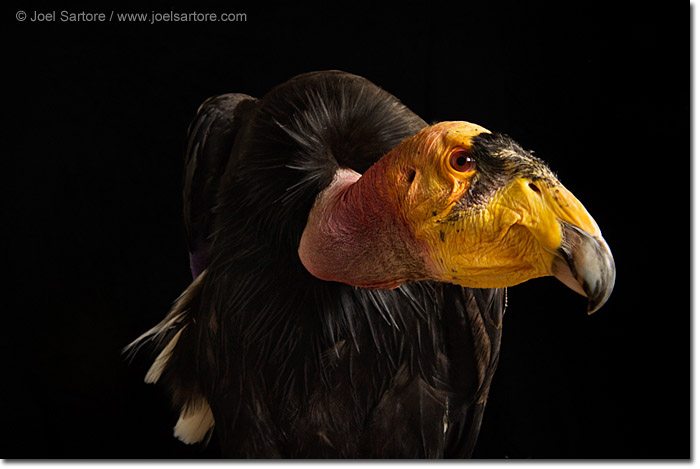
Your work for National Geographic has taken you to the Arctic, the Amazon, and back to your home state of Nebraska – not to mention dozens of other locales spread out all over the map. What has been your most memorable assignment for National Geographic Magazine and why?
Of my nearly 30 stories in NGM, the search for the ivory-billed woodpecker was one of my all-time favorites. This was a story of hope--of a hardwood swamp landscape that had been preserved over the decades by several different groups that worked well together. It's as if the bird was a payoff for their good deeds. It was sure nice to focus on the positive for a change.
I loved reading your Madidi Diary. Have you fully recovered from your bout with leishmaniasis? Looking back on an experience like Madidi, do you have positive feelings or pride or was the whole thing just a utter nightmare?
I'm over the leish, hopefully. I try not to let myself get too run down though, lest my immune system weaken. That's good advice whether you've had the disease or not.
As for Madidi, I'm proud of the story, and even though it was very tough both mentally and physically, I wouldn't trade that experience for the world. I made some lifelong friends, helped save the park from a dam, and learned how good we have it in the United States. So, I'm very proud of the fact that I took that assignment, and that it was a success.
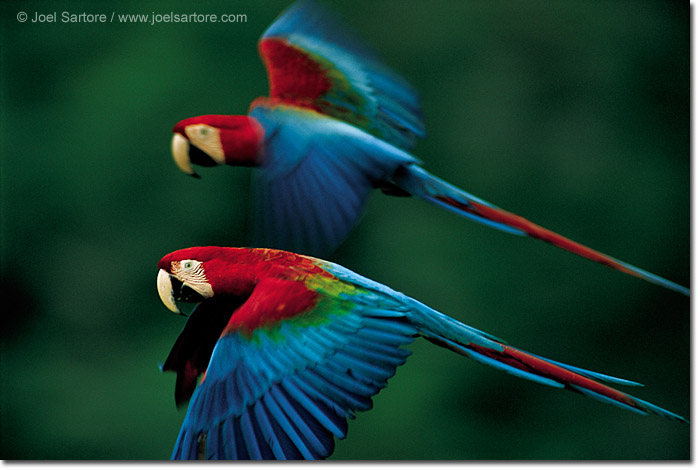
After working with National Geographic for so long, what attributes or qualities do you think their photo editors look for in the images they select?
I think they're looking for images that have a timeless quality yet still tell a story well. We work many months ahead on these stories, so images that combine fine art with journalism seem to be the ones that last and matter most. Of course, everyone loves surprising images as well, but those are hard to come by.
In your latest book, Rare, you photograph endangered animals all over the United States. What did you learn during this project and what do you hope others will gain from reading it?
I learned that there is less time than we thought for many of the species in the book. If they don't get enough habitat set aside, and have people pay attention to them in the way of funding and management, they will leave us. The good news is that the majority of the species in the book can be saved. We just have to care enough, then do the right thing.
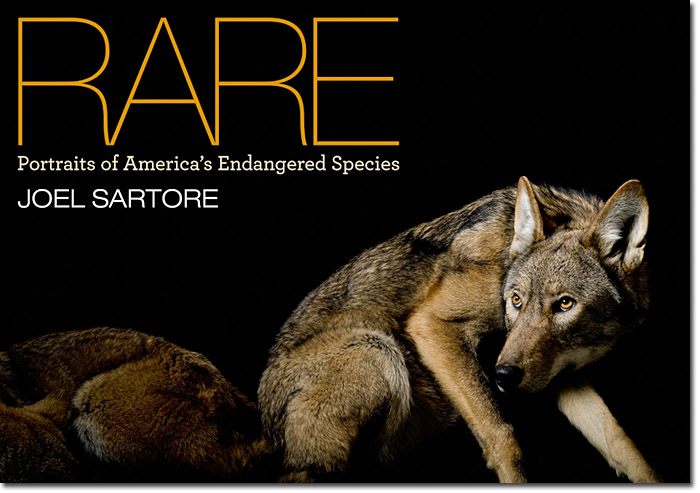
I think there is a bias in how the public cares about the fate of various species. For example, it's fairly easy for people to rally around the bald eagle or even wolves while at the same time showing complete indifference to an endangered beetle or fly. Why should people care about these virtually unknown species that are on the brink of extinction as well?
Well, there are huge areas of China and Brazil that have lost their pollinating insects, including flies and beetles, so that now humans have to pollinate fruits and vegetables by hand using little dishes of pollen and paintbrushes. If that doesn't make you nervous, what will? Besides, it is folly to think that we can destroy one species and ecosystem after another and not have it affect humanity. When we save species, we're actually saving ourselves. We're intricately tied to healthy, functioning ecosystems. But at a time when most folks have no idea how their food is produced, this is all a tough sell.
Here are a few points I made in my local newspaper about a critically endangered insect in my own county, the Salt Creek tiger beetle.
1) Save species and habitat to help save ourselves. To think that humans are not tied in tightly to the natural world is pure folly. In fact, we're totally dependent on healthy, functioning ecosystems for our very survival, from the air we breathe to the food we eat to the water we drink. Notice that the frogs and bird species are thinning out where you live? These things are living monitors of the health of the earth. To think that we can escape their fate over the long haul is not realistic, to say the least.
2) We're killing off the ark. All plants and animals, even the Salt Creek tiger beetle, are God's creatures. Who are we to purposely kill off any of these creations? The Salt Creek tiger beetle is our local example of the massive wave of extinction now going on around the globe, all due to human activity and overpopulation.
3) Save it for education. Ever go on a field trip to a pond or a marsh in grade school or high school? Remember the thrill at seeing the wildlife there, from frogs and tadpoles to dragonflies to the teeming life found in a single drop of water when viewed under a microscope?
4) It's about more than just a beetle. Saving the saline wetlands (or any ecosystem) benefits thousands of other animals, such as migrating ducks, geese, and shorebirds that use such critical habitat at various times of the year.
5) Small things lead to bigger ones. If people care enough to save something as seemingly trivial as a salt marsh and as tiny as a beetle, then they'll surely care about the environmentally big things, like the destruction of 'The Lungs of the World', the Amazon rainforest. Cutting down rainforests leads to global warming. They'll also think more about sustainable living, such as the kinds and amounts of chemicals they use on their lawns and pour down their drains, which end up being consumed by people downstream from their town.
6) As a famous biologist once noted, it is the last word in ignorance when a person asks 'what good is it?' We are not smart enough as a species to understand what parts are worth saving and what are not. Remember the story about a good tinker not throwing away parts until he fully understands what each does? We're not even close to knowing how everything works, whether it's the prairies, rainforest, oceans, the Arctic or even the last of the salt marshes in northern Lancaster County, Nebraska.
7) Let's save endangered species simply because we care. The beetle is just one small part of the picture. The big issue is whether or not all of us care enough to preserve what we have left. Do we want to save species and habitats, or do we want to simply pave over and sterilize as much as we can in the name of economics? If you truly care about the environment, the last islands of natural habitat remaining are all precious, whether it's a salt marsh, a virgin prairie, or a century-old cottonwood tree. To good stewards of the Earth, all are equally worth saving.
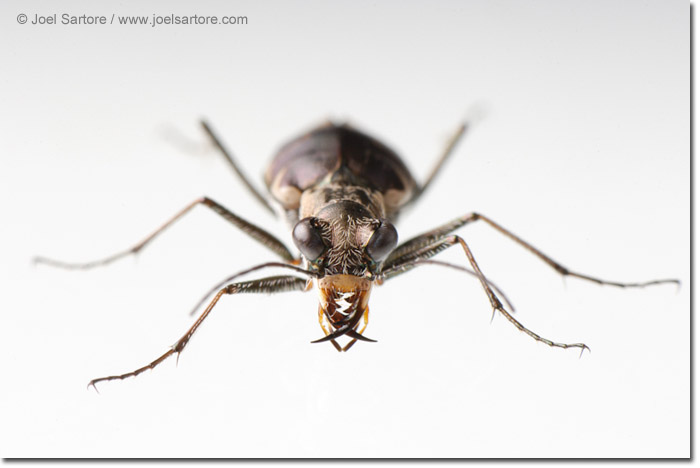
If I recall, you also photographed a National Geographic article on endangered species. Was Rare a logical extension of that assignment?
Yes, absolutely. The magazine could only run so many images. Since I still continue to shoot rare species, the book was the next step.
And for the curious gearheads in our readership, what primary camera body do you use? Which lens do you use most often and why?
I use a Nikon D3 with a 24-70 lens as my primary rig. I also use a Nikon 105 macro to photograph the little stuff.
Comments on NPN nature photographer interviews? Send them to the editor. NPN members may also log in and leave their comments below.
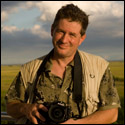 A life-long Nebraskan, Joel Sartore brings a sense of humor and a mid-western work ethic to all of his National Geographic Magazine assignments. Two decades with the National Geographic Society have allowed him to cover everything from the remote Amazon rain forest to beer-drinking, mountain-racing firefighters in the United Kingdom.
A life-long Nebraskan, Joel Sartore brings a sense of humor and a mid-western work ethic to all of his National Geographic Magazine assignments. Two decades with the National Geographic Society have allowed him to cover everything from the remote Amazon rain forest to beer-drinking, mountain-racing firefighters in the United Kingdom.
Joel is committed to conservation, especially in the Great Plains where he has lived his whole life. In his time with National Geographic, he has focused on endangered species and land use issues. He is co-founder of the Grassland Foundation, and a founding member of the International League of Conservation Photographers. For more of Joel's work, visit his website, www.joelsartore.com.
You can get autographed copies of Rare directly from Joel via www.rarethebook.com.